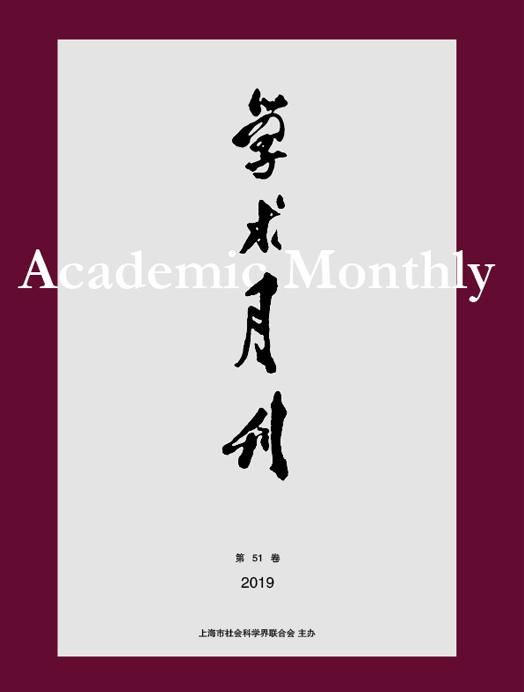Citation:
Dongping ZHOU and Yifeng XUE. On a New Theory of the History Regarding the Formation of the Medieval Penalty System of “Five Punishments” against the Backdrop of the Hu-Han Fusion in Northern Dynasty[J]. Academic Monthly, 2021, 53(3): 181-192.

On a New Theory of the History Regarding the Formation of the Medieval Penalty System of “Five Punishments” against the Backdrop of the Hu-Han Fusion in Northern Dynasty
-
Abstract
The so-called“Five Punishment” penalty system in ancient times is a viewpoint influenced by Confucian classics and the idea of “Five Elements” developed by Zou Yan during the Warring States period. Against the backdrop that laws and decrees were not codified, it is hard to confirm that there exited “Five Punishment” penalty system in Qin Dynasty and early Han Dynasty, letting alone in pre-Qin period. Wei Cao’s promulgation of the code mentioned “creating Five Punishment in accordance with ancient meaning”, which is a practical exploration regarded as a turning point. After this, the minority-reigning dynasties in Northern Dynasties period has impacted on medieval legal history. One of the highlight was the significant bearing that Hu-Han Fusion had on forming the medieval penalty system of “Five Punishment”, ranging from the change of meaning of “penalty”, the unprecedented role of North Wei Dynasty’s inclusion of hanging into law in law-making regarding death penalty in China, exile’s winding into penal code in Northern Dynasty, the variation of caning, to the temporary revival of castration. All these are thus inspiring for us to tease out Chinese ancient history regarding punishment, especially to learn about the history regarding the formation of the medieval penalty system of “Five Punishments” and the “New China” in Sui and Tang Dynasties from a refreshing perspective.
-

-
References
-
Access
-
-
[1]
Jing XIE
. Grounds of Criminal Penalty between Confucianism and Legalism: The Ancient, Modern, Chinese and Western Dimensions of Penalty for Theft in the Qing Code. Academic Monthly,
2019, 51(8): 106-121.
-
[2]
. . Academic Monthly,
2016, 48(07): 99-108.
-
[3]
TAO Dongfeng
. An Analysis of Hannah Arendt’s Concept of the “World”. Academic Monthly,
2024, 56(2): 115-123.
-
[4]
. . Academic Monthly,
2016, 48(02): 108-107.
-
[5]
Ping FU
. Creating Leading-edge Integrated Governance: The Governance Innovation of Poverty Alleviation in China. Academic Monthly,
2021, 53(7): 121-131.
-
[6]
. The Internal Logic of “Sharing Economy” and Public Policy. Academic Monthly,
2018, 50(04): 86-97.
-
[7]
He Yuchang
, Fang Kun
. . Academic Monthly,
2018, 50(5): 56-67.
-
[8]
Hailiang MENG
. The Integration of Multiple Disciplines Promotes the Ancient Ethnic Genealogy Research. Academic Monthly,
2022, 54(10): 200-216.
-
[9]
Linghai CHEN
. Legal History inside Poetry: The life and Career of Qing Judges in Poetry Collection of Baochongzhai. Academic Monthly,
2018, 50(11): 162-178.
-
[10]
Gang XIAN
. On the System and Dual Structure of Schelling’s Philosophy of Art. Academic Monthly,
2020, 52(12): 5-13.
-
[11]
XIE Jing
. A Comparative Research of Property Crime System in The Qing Code. Academic Monthly,
2023, 55(10): 99-108.
-
[12]
XIONG Bingwan
. The System of Basic Legal Regimes for Data Market. Academic Monthly,
2024, 56(1): 102-114.
-
[13]
Yanhong LIU
. To Promote the Development of the Discourse System of Criminal Law by Scientific Legislation. Academic Monthly,
2019, 51(4): 94-105.
-
[14]
WANG Zhenfu
. Logical Structure of Category System in Chinese Aesthetics. Academic Monthly,
2024, 56(1): 141-154.
-
[15]
Ruichang LI
. An Outline of Policy Knowledge System Based on Policy Relations. Academic Monthly,
2021, 53(3): 73-84.
-
[16]
Zongqi CAI
. The Syntax and Poetic Vision of Tang Pentasyllabic Regulated Verse. Academic Monthly,
2019, 51(1): 115-134.
-
[17]
Qinfu TANG
. A Study about the Establish of the Five-etiquette System during the Qin and Jin Dynasties. Academic Monthly,
2019, 51(1): 150-163.
-
[18]
. . Academic Monthly,
2016, 48(09): 140-148.
-
[19]
Guo Yongjian
. . Academic Monthly,
2018, 50(5): 128-137.
-
[20]
Gang DONG
. Interpreting the Jade Prophecies of the Fourth Year of Guangchu period in Han Zhao. Academic Monthly,
2021, 53(8): 195-205.
-
-



 沪公网安备 31010102003103号
沪公网安备 31010102003103号 DownLoad:
DownLoad: